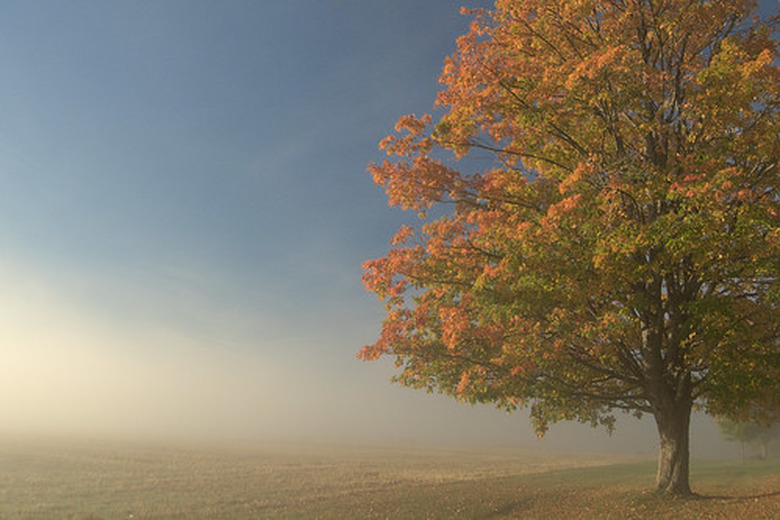The Effect Of Darkness On Photosynthesis
Plants and some single-celled organisms use photosynthesis to transform water and carbon dioxide into glucose. Light is essential to this energy-generating process. When darkness falls, photosynthesis stops.
Daytime
Daytime
During daylight hours, plants perform photosynthesis, storing energy that will help them reproduce and grow.
Nighttime
Nighttime
Photosynthesis stops when the sun sets. During night hours, most plants switch from photosynthesis to the opposite process, respiration, in which carbon dioxide and water are produced rather than consumed.
Succulents
Succulents
According to the National Park Service, cacti and other succulents open their stomata to take in carbon dioxide at night rather than during the day, thus avoiding unnecessary moisture loss. That carbon dioxide is then held until daylight returns and photosynthesis resumes.
Dormancy
Dormancy
Some plants experience a longer dormancy period in wintertime. For instance, Rocky Mountain evergreens at high elevations perform photosynthesis on only the winter's sunniest and warmest days.
Food Chain
Food Chain
The same stored energy that plants use to grow and reproduce later nourishes humans and other animals who ingest the plants. Even carnivorous animals benefit indirectly from photosynthesis when they eat animals that have eaten plants.
References
Cite This Article
MLA
Dahl, Elisabeth. "The Effect Of Darkness On Photosynthesis" sciencing.com, https://www.sciencing.com/effect-darkness-photosynthesis-5840286/. 22 November 2019.
APA
Dahl, Elisabeth. (2019, November 22). The Effect Of Darkness On Photosynthesis. sciencing.com. Retrieved from https://www.sciencing.com/effect-darkness-photosynthesis-5840286/
Chicago
Dahl, Elisabeth. The Effect Of Darkness On Photosynthesis last modified March 24, 2022. https://www.sciencing.com/effect-darkness-photosynthesis-5840286/
